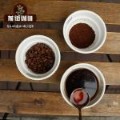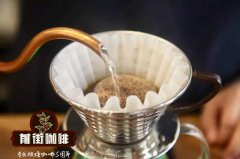Flavors of Burundi in Africa

Burundi, located in the interior of Africa, has a land area of only 28000 square kilometers, but 90% of the people with agriculture as the main income, of which coffee is the largest.
Planting conditions
The geographical environment of Burundi is very suitable for coffee cultivation, bordering Rwanda in the north, Tanzania in the east and south, Congo (Kinshasa) in the west and Lake Tanganyika in the southwest. There are many plateaus and mountains in the territory, most of which are composed of the plateau on the east side of the East African Rift Valley, with an average elevation of 1600 meters above sea level, which is known as the "mountain country". More than half are located on the surface of the famous Lake Lake Tanganyika.
There are almost no coffee farms in Burundi, and the pattern of coffee production in Burundi is relatively similar to that in Ethiopia, mainly by smallholder production.
| | processing method |
Burundi is mainly based on the traditional water washing treatment.
(1) selection of beans
Put the harvested fruit in a water tank and soak for about 24 hours. At this time, ripe fruit will sink, while immature and overripe fruit and some impurities will float up and can be removed.
(2) remove the pulp
Use a machine to remove the peel and pulp, leaving only coffee beans wrapped in endocarp. At this time, there is a layer of mucous membrane on the outside of the beans, and the process of washing is to wash this layer of mucous membrane.
(3) fermentation
The adhesion of the mucous membrane is very strong and is not easy to remove. It must be placed in the tank for about 18-36 hours to ferment and decompose the mucous membrane. There are two methods of fermentation, namely wet fermentation and dry fermentation, as the name implies, the former adds water, the latter does not add water. In the process of fermentation, the seed and internal pulp will produce special changes, which is one of the steps that most affect the flavor of coffee.
(4) washing
Farms that use the washing method must build washing ponds and be able to introduce an endless supply of running water. During the treatment, the fermented beans are put into the pool and passed back and forth, using the friction of the beans and the power of running water to wash the coffee beans until smooth and clean.
(5) drying
After washing, the coffee beans are still wrapped in the pericarp with a moisture content of 50%. They must be dried to reduce the moisture content to 12%, otherwise they will continue to ferment and become moldy and rotten. The better treatment is to use sunlight to dry, although it will take 1-3 weeks, but the flavor is very good and very popular. In addition, machine drying is used in some places, which greatly shortens the processing time and makes the flavor not as good as that of sun-dried coffee.
(6) shelling
The dried beans can be stored in a warehouse or handed over to the factory for shelling to remove endocarp and silver film.
(7) selection and grading
Like the tanning method, washed coffee has a process of picking and grading, which is used to remove defective beans and ensure better quality, which is then handed over to exporters to sell around the world.
| | planting variety |
Burundian coffee beans are mainly bourbon varieties. Bourbon is a secondary species of Typica mutation, which belongs to the same existing ancient coffee variety as Ironka. The green fruit will show bright red when it is ripe.
Compared with the tin card species, the bourbon species has wider leaves and denser growth. although the seed setting is higher than the tin card, the harvest time is also 2 years, which is also a variety with less yield, but it has a high-quality taste, like the sour taste of red wine, and the aftertaste is sweet. Coffee bean particles are large in shape, uniform in size, uniform in color and shiny. In order to facilitate harvesting, farmers will trim coffee trees to no more than 150 centimeters.
But like Rwanda, the coffee grown here is prone to potato flavor.
| Coffee producing area
Burundian coffee mainly comes from the following five major producing areas, namely Buyenz, Bugesera, Bweru, Kirimiro and Mumirwa. Although there are other small producing areas, these regions are the most famous for their coffee.
Buyenz
This is a large area of northern Burundi bordering Rwanda. It is a major coffee producing area. There are two areas worth mentioning in this producing area: Kayanza and Ngozi.
Kayanza: located in the north of Burundi, adjacent to Rwanda and with a mild climate, it is the second highest density of washing treatment plants in Burundi.
Ngozi: located in northern Burundi, with an average elevation of 1650 meters. Although it produces less coffee than Kayanza, it also shows its potential for quality in COE competitions. 25% of the washing plants in Burundi are located here.
GITEGA
This is a production area located in central Burundi and is home to two state-run dry treatment plants. The main task of the processing field is to carry out the final treatment and quality management before export. The average elevation of the producing area is 1450 meters.
Mumirwa
The Mumirwa area is located on the border between Rwanda and the Democratic Republic of the Congo in the northern part of the country. The area is between 1100 and 2000 meters above sea level, with an average precipitation of 1100 millimeters per year. The annual temperature ranges from 18 degrees Celsius to 22 degrees Celsius.
| | COE |
The competition mode of Burundian coffee is mainly COE, and its full name is Cup Of Excellence, which is a boutique coffee competition system commonly used by 10 major coffee producing countries in the world.
Coffee farmers will have to take part in at least five cup tests during the three-week competition, and there will be another round of extra matches for the coffee that is in the top 10. Coffee farmers who can be selected as the winners of the COE will not only recognize the excellent quality of their coffee, but also earn a lot of money from the auction. With good auction revenue, coffee farmers have a better chance to improve their quality, and consumers have more opportunities to drink good coffee, forming a virtuous circle.
| | CWS&SOGESTAL |
During the period of nationalization of the coffee industry, the Government of Burundi set up 138 small water washing stations in coffee producing areas, and it is estimated that there are already more than 200 CWS (Coffee Wash Station). On top of CWS, there will be a larger organization, similar to Kenya's large processing farm Factory or cooperative Coop, but in Burundi, it is called Sogestal! Sogestal is the management integration unit of CWS, which is handled by CWS small washing station after receiving cherries, and the following steps, dry processing, grading, sales and other matters are handed over to Sogestal to do. After the coffee was opened to the public, the previous seven sogestal became a joint venture between state-owned and private enterprises. The current policy is for the government to reduce its shareholding, usually less than 20% by the government and more than 80% by the private sector.
Important Notice :
前街咖啡 FrontStreet Coffee has moved to new addredd:
FrontStreet Coffee Address: 315,Donghua East Road,GuangZhou
Tel:020 38364473
- Prev

Introduction to the flavor characteristics of Sidamo Huakui Coffee the taste difference between Ethiopian coffee beans treated by sun drying and washing
Why is it called Huakui? In 2017, Ethiopia's DW Raw Bean Company sent their coffee beans to TOH (theTasteOfHarvest), a competition hosted by the African Coffee Association, and the tanning batch won the championship of TOH Ethiopia. This batch of raw beans, with crown
- Next

What's the taste of Kenyan coffee? Introduction to the grading system of Kenyan Coffee
Professional coffee knowledge exchange more information about coffee beans Please follow the coffee workshop (official Wechat account cafe_style) since coffee beans traveled through the mountains from Ethiopia to Kenya, Kenya has become one of the leaders of the coffee industry. Coffee beans produced under the mountain terrain of Gaoyuan are generally mellow, excellent in taste and with pleasant acidity.
Related
- Detailed explanation of Jadeite planting Land in Panamanian Jadeite Manor introduction to the grading system of Jadeite competitive bidding, Red bid, Green bid and Rose Summer
- Story of Coffee planting in Brenka region of Costa Rica Stonehenge Manor anaerobic heavy honey treatment of flavor mouth
- What's on the barrel of Blue Mountain Coffee beans?
- Can American coffee also pull flowers? How to use hot American style to pull out a good-looking pattern?
- Can you make a cold extract with coffee beans? What is the right proportion for cold-extracted coffee formula?
- Indonesian PWN Gold Mandrine Coffee Origin Features Flavor How to Chong? Mandolin coffee is American.
- A brief introduction to the flavor characteristics of Brazilian yellow bourbon coffee beans
- What is the effect of different water quality on the flavor of cold-extracted coffee? What kind of water is best for brewing coffee?
- Why do you think of Rose Summer whenever you mention Panamanian coffee?
- Introduction to the characteristics of authentic blue mountain coffee bean producing areas? What is the CIB Coffee Authority in Jamaica?

